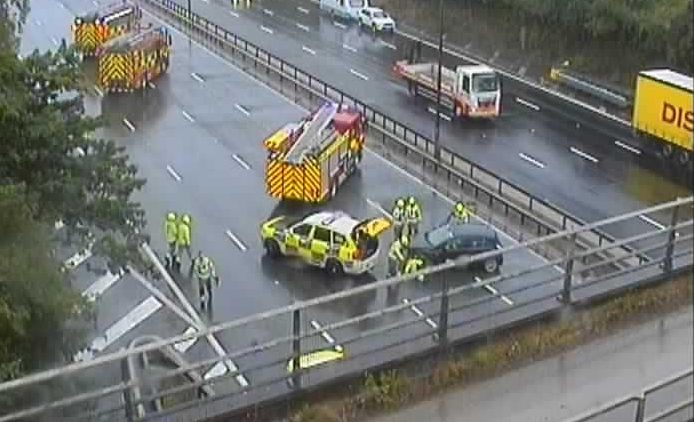Introduction
The M25 motorway, a crucial transport artery encircling Greater London, was the scene of a serious crash earlier this week, leading to significant traffic disruptions. This incident not only underscores the importance of road safety but also raises concerns over the rising number of accidents on this busy ring road, particularly during peak hours.
Details of the Incident
On Wednesday, around 8:00 AM, emergency services were called to reports of a multi-vehicle collision near Junction 14, which connects to Heathrow Airport. Eyewitnesses reported that a lorry collided with several vehicles, resulting in one car overturning. The incident involved at least five vehicles, prompting a swift response from the police, fire service, and ambulance teams.
Traffic was halted in both directions as responders worked to clear the wreckage and assist the injured. A total of three individuals sustained injuries, with one requiring hospitalisation. The police have emphasised that weather conditions at the time were clear, urging drivers to adopt more cautious behaviour to prevent further accidents.
Impact on Traffic
The M25 is one of Europe’s busiest motorways, and this crash caused extensive tailbacks. By mid-morning, reports indicated delays of over two hours for drivers attempting to navigate past the scene. Many commuters turned to alternative routes, leading to congestion on surrounding roads.
Authorities implemented diversions and worked diligently to clear the site, but the impact on rush hour traffic was substantial. Analysis from traffic management experts indicated that incidents like this emphasise the need for ongoing improvements in road safety and driver awareness.
Safety Concerns and Government Response
The frequency of crashes on the M25 has prompted calls from road safety advocates for better measures. Recent statistics from the Department for Transport show a worrying increase in accidents on the motorway, particularly in areas with heavy congestion.
In response to the rising number of incidents, the UK government is exploring potential enhancements in infrastructure, including better signage and increased enforcement of speed limits. The recent crash has injected urgency into ongoing discussions regarding the implementation of advanced traffic management systems.
Conclusion
The recent M25 crash serves as a stark reminder of the perils faced by drivers on one of the UK’s busiest motorways. As road safety advocates and government bodies convene to address these issues, it is crucial for drivers to remain vigilant and exercise caution. Ongoing discourse around infrastructure improvements may lead to safer driving conditions, ultimately reducing accidents on the M25 and enhancing commuter safety.

